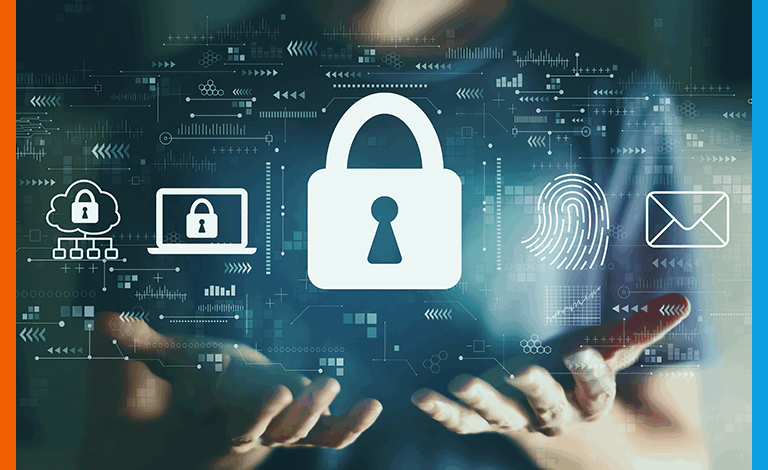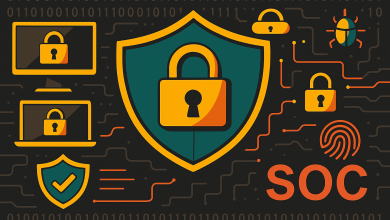
Cybersecurity is no longer just an IT concern—it is a fundamental business priority. With cybercriminals using increasingly sophisticated tactics, companies of all sizes are vulnerable to attacks that can compromise data, disrupt operations, and erode customer trust. In the last few years alone, we have seen countless examples of a lack of cybersecurity measures resulting in hackers entering the systems of major brands and organisations including British Airways, BBC, Boots, Greater Manchester police, and more.
Most recently, the UK’s cybersecurity agency has urged organisations to ‘guard their systems against quantum hackers by 2035’, due to fears of the prospect of potential breakthroughs in powerful computing. As digital threats continue to escalate, investing in AI-driven cybersecurity measures is essential to safeguarding businesses and ensuring long-term resilience.
The growing threat of cyber attacks
Cybersecurity threats are increasing at an alarming rate, with 7.78 million cyber attacks targeting UK businesses in 2024 alone. In tandem with this, half of all UK businesses experienced a cyber-attack, with an average financial impact of £3,230 per incident. As cybercriminals become more sophisticated, companies must adopt proactive measures to protect their data, customers, and financial security.
As the frequency and sophistication of cyber attacks rise, businesses can no longer rely solely on traditional security measures. The evolving threat landscape demands more agile, adaptive defenses that can respond to both known and unknown threats in real-time. Investing in advanced technologies like AI and machine learning is crucial for businesses looking to stay ahead of cybercriminals and protect their critical assets. By implementing comprehensive cybersecurity strategies, companies can minimise their vulnerability to attacks and mitigate the financial and reputational damage that can result from data breaches and cyber threats.
AI as the First Line of Defense
AI’s growing presence has revolutionised cybersecurity by providing real-time threat detection and automated responses. Unlike traditional security measures, AI can instantly analyse vast amounts of data to identify suspicious patterns and potential breaches. This capability enables businesses to prevent attacks before they escalate, reducing both financial and reputational damage. By leveraging AI-driven security solutions, companies can stay ahead of evolving cyber threats in an increasingly digital world.
Strengthening Fraud Prevention with AI
Fraud is a growing concern, with online marketplaces and financial transactions being prime targets. AI enhances fraud detection by analysing user behaviour, flagging anomalies, and preventing unauthorised access. Machine learning algorithms can differentiate between legitimate and suspicious activities, reducing false positives while strengthening security. For platforms like G2A.COM, AI-driven fraud prevention is essential in maintaining trust and ensuring a secure digital marketplace.
As fraudsters become more sophisticated, AI’s ability to continuously learn and adapt to new tactics is vital. By analysing vast amounts of data in real-time, AI can identify emerging fraud patterns and prevent potential attacks in their early stages. Moreover, AI can integrate with other security measures like biometric verification and two-factor authentication, creating multi-layered defense strategies. This proactive approach ensures that businesses are not only reacting to fraud but anticipating and mitigating risks before they escalate, preserving both security and customer confidence.
Addressing the Cybersecurity Talent Gap
Despite AI strengthening cybersecurity, there remains a critical shortage of skilled professionals to manage and implement these solutions effectively. The demand for cybersecurity talent is growing rapidly, yet many organisations struggle to find experts with the necessary skills. As a result, investing in cybersecurity education, training programs, and upskilling initiatives is essential to bridging this gap. By fostering the next generation of cybersecurity professionals, businesses can ensure they have the human expertise needed to complement AI-driven defenses.
A recent survey revealed that UK businesses are facing significant skills shortages in key digital areas, with 31% of businesses lacking expertise in cyber threat intelligence and 26% in security testing. These gaps leave organisations vulnerable to increasingly sophisticated cyber threats, making it essential to invest in both attracting new talent and upskilling existing teams.
Organisations must not only attract new talent but also prioritise ongoing training to ensure employees can adapt to evolving threats. By fostering a culture of continuous learning and upskilling, businesses can build a stronger defense against cyber attacks while ensuring long-term resilience.
The Other Side of the Coin – AI and Hackers
On par with the attempts of businesses to strengthen their protection, cybercriminals are also learning to use AI for their own benefit. There are many ways they can do it, here are but a few:
- Data poisoning: Hackers alter the training data used by AI algorithms to influence their decisions. The algorithm is fed deceptive information, leading to flawed outputs. Detecting data poisoning is difficult and time-consuming, and by the time it’s discovered, the damage could be severe.
- Deepfakes: AI manipulates visual or audio content to make it seem legitimate, including impersonating individuals with phony audio and video. This doctored content can be quickly spread online, creating stress, fear, or confusion. Cybercriminals use deepfakes alongside social engineering, extortion, and other schemes.
- Password hacking: Cybercriminals use AI to improve algorithms for deciphering passwords, making guessing quicker and more accurate. This efficiency makes hacking more profitable and may lead to increased focus on password hacking.
- Social engineering schemes: These schemes use psychological manipulation to trick individuals into revealing sensitive information or making security mistakes. They include phishing, vishing, and business email compromise scams.
AI gives cybercriminals the possibility to automate and personalize their attacks, creating more sophisticated messaging and increasing the volume and success rate of attacks. The fact that hackers are implementing the latest discoveries and technologies in these areas further solidifies the need to use AI as countermeasures to those attempts.
The Future of AI in Cybersecurity
As cyber threats become more advanced, AI will continue to play a pivotal role in cybersecurity strategies. Businesses must invest in AI-driven solutions to fortify their defenses and protect sensitive information. In an era where digital threats are evolving rapidly, AI offers the agility and intelligence needed to safeguard the future of cybersecurity.
Looking ahead, the continued advancement of AI in cybersecurity will also see greater collaboration between AI systems and human experts. While AI can handle real-time threat detection and response, human oversight remains crucial for strategic decision-making and complex problem-solving. As AI learns to identify new attack vectors, cybersecurity professionals will be empowered to act faster and more decisively. This synergy will create a robust security framework capable of adapting to the dynamic nature of digital threats, ensuring that businesses are always a step ahead of potential attacks.




